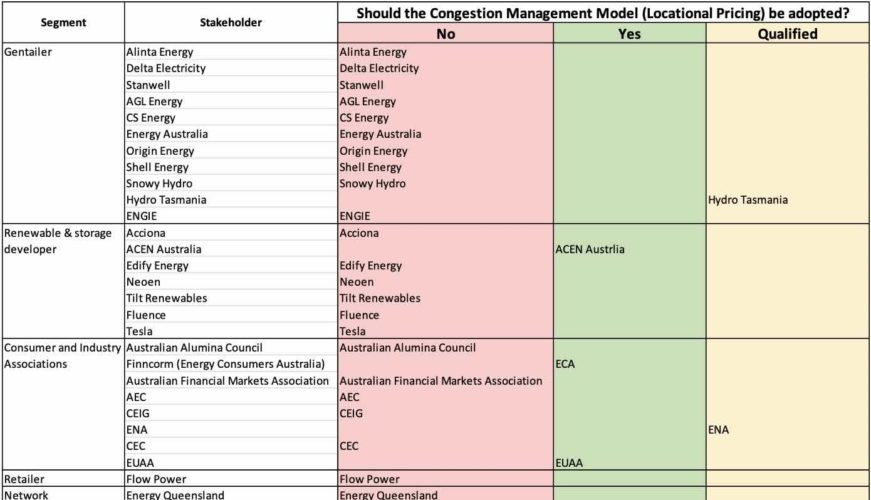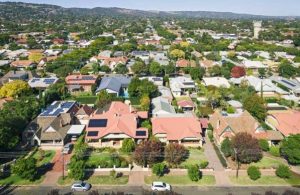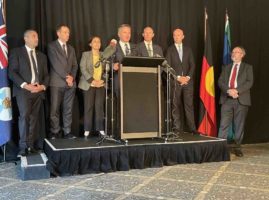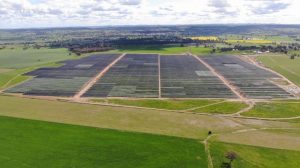State and federal energy ministers have been urged by multiple organisations to reject two key market reforms put forward by the Energy Security Board, and instead embrace other measures that advocates say can fast-track the rollout of renewables and storage.
Australia is facing an investment blockage because of uncertainty around the future shape of the market rules, which are to be re-rewritten to make them fit for purpose for the new technologies that are replacing traditional thermal generation.
But the key proposals put forward by the ESB – a so-called capacity mechanism and another reform on grid access – have upset nearly everyone. The ministers are being urged to take design back into their own hands, and to push the green light on a suite of “easier and quicker” solutions.
The energy ministers meeting on Friday will be an all day event from 9.30 to 3pm at Parliament House in Canberra, after an informal dinner in Canberra on Thursday night.
They have already been sent a 600-page briefing, and a draft communique. One advisor noted the “high level of organisation” compared to the meetings overseen by former Coalition minister Angus Taylor.
The meeting will be a landmark event because it will, for the first time, endorse putting environment back into the National Electricity Objective, considered absolutely key if sensible decisions are to be made investment, management and regulation of the future grid.
The proposal – as RenewEconomy wrote exclusively last week – will be presented by the ACT government and is expected to be endorsed by federal energy minister Chris Bowen and the other states.
Environment was dropped at the last minute by the Howard government – under pressure from the “greenhouse mafia” – when the rules of the market were being finalised in the late 1990s, and have hamstrung investment and regulatory decisions ever since.
Bowen will also present his idea for a “supercharged” ISP, which could look at a blueprint for energy and storage as well as the transmission already included in AEMO’s main document.
The ministers will also address the country’s gas problems following a withering report by the ACCC on the “cartel-like” behaviour of the gas industry that helped trigger the energy crisis, and ultimately the market suspension, in June and July.
For the electricity industry though, the key focus is on what to do with the ESB’s proposals on capacity markets and grid access and congestion management, known as Cogati. And also what to do with the ESB itself.
There are some suggestions that the role of the ESB will be downplayed and instead of becoming the arbiter of policy, its role will be diluted to that of “input” for ministers to make their own decisions on market design.
There has been an angry response to the ESB’s insistence that coal generators be jammed into a new mechanism that seeks to ensure there is enough dispatchable generation and ageing coal and gas generators retire.
Nearly every respondent has agreed that this is a dumb idea, and the two problems – managing coal exits and encouraging new technologies – should be split.
Many want the ESB proposals to be dumped altogether and are urging the ministers to regain control of market design and consider other options such as storage targets and possibly a reserve capacity mechanism.
The chances are, however, that the energy ministers will give the ESB another chance to get it right, albeit with the explicit instruction to separate coal generators from any new capacity design.
That will frustrate the market, because they say they need clearer investment signals over a shorter time frame to lock in some of the green capital looking for homes, and to ensure Australia can meet the 82 per cent renewables ambition by 2030 shared by both the Labor government and the market operator.
The Clean Energy Council has been lobbying ministers to endorse a storage target – based around the existing renewables target – that it says will be a “no regrets” mechanism to ensure enough storage is built to meet the market operator’s reqirements.
It is also asking for support for the work it has been doing with the market operator on new connection protocols – instead of the revised Cogati – that it says will speed up the roll out of renewable energy zones, and to conduct detailed analysis on where exactly new disaptchable capacity is needed.
ACT minister Shane Rattenbury, who will be presenting the proposal to include environment in the market rules, said on Thursday that he would oppose any mechanism that included coal.
“As work progresses on a capacity mechanism, it is vital that any capacity mechanism helps to deliver over 80% renewable electricity and at least 43% reduction in emissions by 2030 and is consistent with an orderly exit of coal generators.
“I maintain that only zero emissions technologies should be eligible for the capacity mechanism. I look forward to discussing the next steps for this work with my fellow Energy Ministers tomorrow,” Rattenbury said.
This week, a group of 11 NGOs, consumer and research groups, including the Smart Energy Council, the Australia Institute, and IEEFA, also wrote to ministers suggesting using the Safeguard Mechanism to implement caps on emissions that could be reduced over time.
They also suggested separate mechanisms to deal with coal exits, such as reliability bonds, as well as a storage target along the lines of the LRET.
The degree of opposition to the ESB proposals has been summed up by advisory firm Nexa, which found that only six out of 78 respondents endorsed the ESB’s position. And three of these were gas companies. (And RenewEconomy suspects the support of Alinta is more qualified than indicated).

Nexa’s Stephanie Bashir says there is just as much concern about the Cogati proposals to deal with grid congestion being put forward by the ESB, despite years of pushback by the industry. They are seen as a major impediment to new investment.
Nexa’s assessment of the submissions finds that only four of 28 companies agreed access reform was needed, and just three of 28 – including two consumer lobbies – thought that the congestion management model (locational pricing) was a good idea.
Bashir says the fate of the congestion management reform, also known as locational marginal pricing, is one of the key issues for project developer and investors.

Virtually all the big players – and the new technology companies – are agreed that there is either no case for reform, or they believe that the proposals put forward by the ESB make no sense.
Some examples highlighted by Nexa include:
“It’s not that we disagree that there are problems or that things could be done better. Instead, we think the problems are overblown, and the cure is worse than the disease” wrote Neoen.
“We are unsure of the equity of introducing a CMM type scheme that automatically rebates incumbent generators at the expense of potentially more competitive new entrants,” wrote Tesla.
And the incumbents are not happy either: “We consider that the case for change for this reform has not been made,” says Snowy Hydro.










